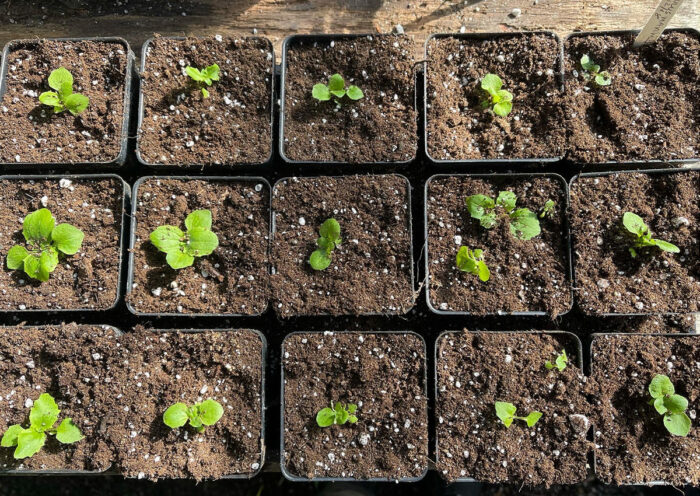
When it comes to seed sowing, many of us in the North are eager to get things going as early as possible. More often than not, however, we are advised to wait. While this works for many seeds, there are a few flowers that benefit from being started early in January and February. Below you’ll find information on annuals to start early in our climate.
No one needs to tell us gardeners in the Northeast that our weather is unpredictable. Because of that, not all sowing methods work as well for us as they do in other parts of the country. Novel techniques such as winter sowing in milk jugs may work well in mild-winter climates like the Mid-Atlantic states, or in areas where there is a consistent cover of deep snow, but in the Northeast, we know that Mother Nature often doesn’t always play by the rules. I don’t know about you, but I’ve moved much of my seed starting back indoors and under lights, where I can control the conditions no matter what the weather might bring.
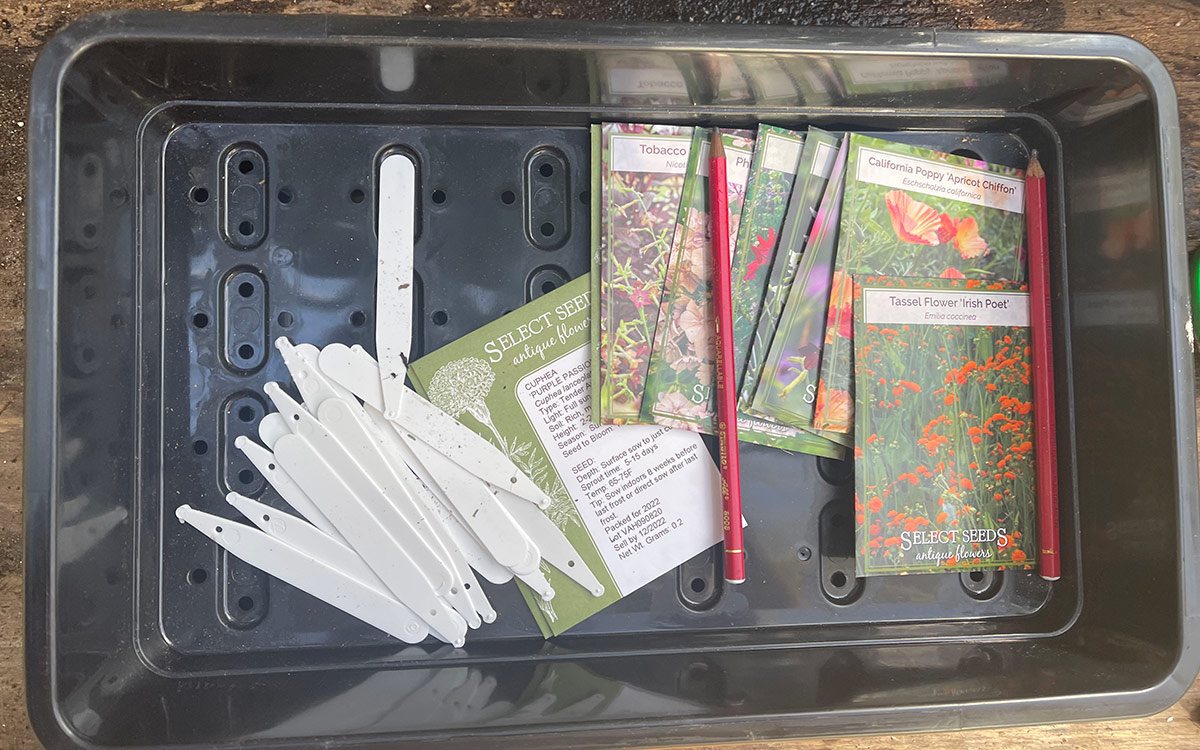
General tips for starting annuals from seed
Many of the annual flowers that we buy can be started from seed at home. Some of you may already start your tomatoes or peppers from seed, but maybe this year you can try a few annuals too. Most of us just use a simple homemade setup. Florescent full-spectrum or LED lighting works best. Beyond that, you need to find the right spot for your unit, but that should be based on what you plan to grow. Separate annuals that require constant warmth (such as geraniums, begonias, and impatiens) from those that are best grown in cooler conditions (such as sweet peas and pansies).
Set your light unit based upon the temperature range required for what you are growing. For annuals that require warmth, try growing them in an unused bedroom or elsewhere in the house. For those that prefer cooler conditions, try a garage or an unheated cellar.
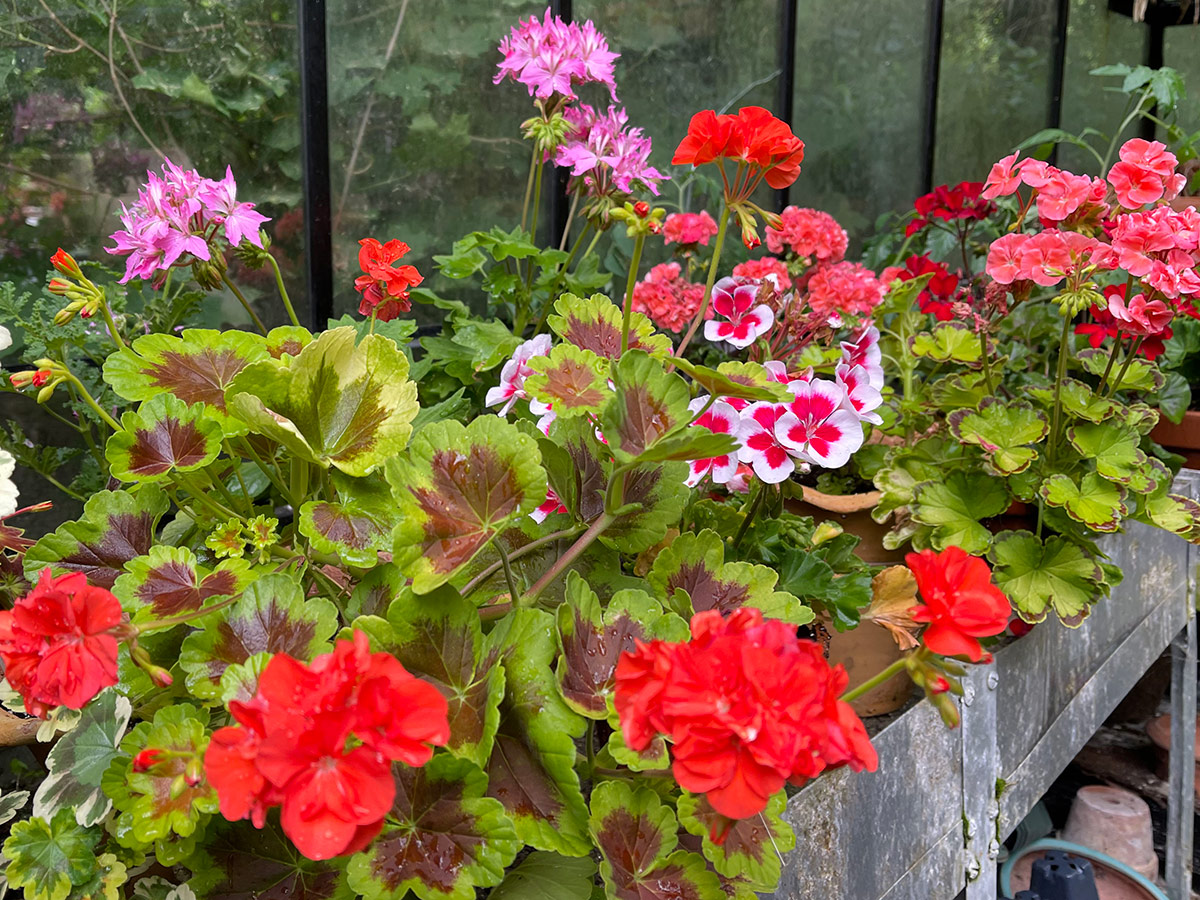
Annuals That Need Consistent Warmth
Geraniums
Not truly an annual but treated as one, the common geranium (Pelargonium spp. and cvs., Zones 10–11) is a great yet often overlooked grow-at-home crop. Seed may seem pricey, but you can get dozens of plants from just a single envelope. There are many seed strains to choose from, and if you go with a mixed color selection, you often end up with plenty of exciting combinations with plants that cost a fraction of what nursery-grown specimens do.
But I think the best thing about growing geraniums from seed is that they allow you to start sowing seeds early in the year—as early as New Year’s Day, which helps us gardening types feel as if we are getting things going even though winter has just begun.
Geranium seeds are easy to handle. Sprinkle them on the surface of a potting mix, and cover the seed lightly with vermiculite or soil. Gently water the seeds flat, and grow them in warm conditions (near 70°F) with the brightest light you can offer—ideally LED. (Full-spectrum is best, but a florescent shop light will do in a pinch.)
Wax begonias and impatiens
The old-fashioned wax begonia (Begonia × semperflorens-cultorum cvs., Zones 10–11) seems to be making a comeback (OK, maybe it’s not yet making a comeback, but it should be), along with impatiens (Impatiens spp. and cvs., Zones 10–11), of which there are dozens of good varieties to grow from seed. Luckily, both begonias and impatiens enjoy the same warm conditions under lights until they are ready to plant outdoors near the end of May. Use the same guidelines for handling and caring for seeds that you would with geraniums. Be prepared, though, as begonia seeds are very tiny and dustlike. Mix them with some dry sand or vermiculite, and surface-sow.
Annuals That Prefer Cooler Conditions
Sweet peas
Sweet peas (Lathyrus odoratus cvs., annual) also appreciate an early start, but only if you can keep their growing environment slightly cooler than what is comfortable in the house. Sow sweet peas into individual pots, one per 3-inch pot, and set the seeds half an inch deep. Or sow four to five seeds in a 6-inch deep pot, as their roots prefer more space if you can provide it. For my favorite sweet pea varieties, click here.
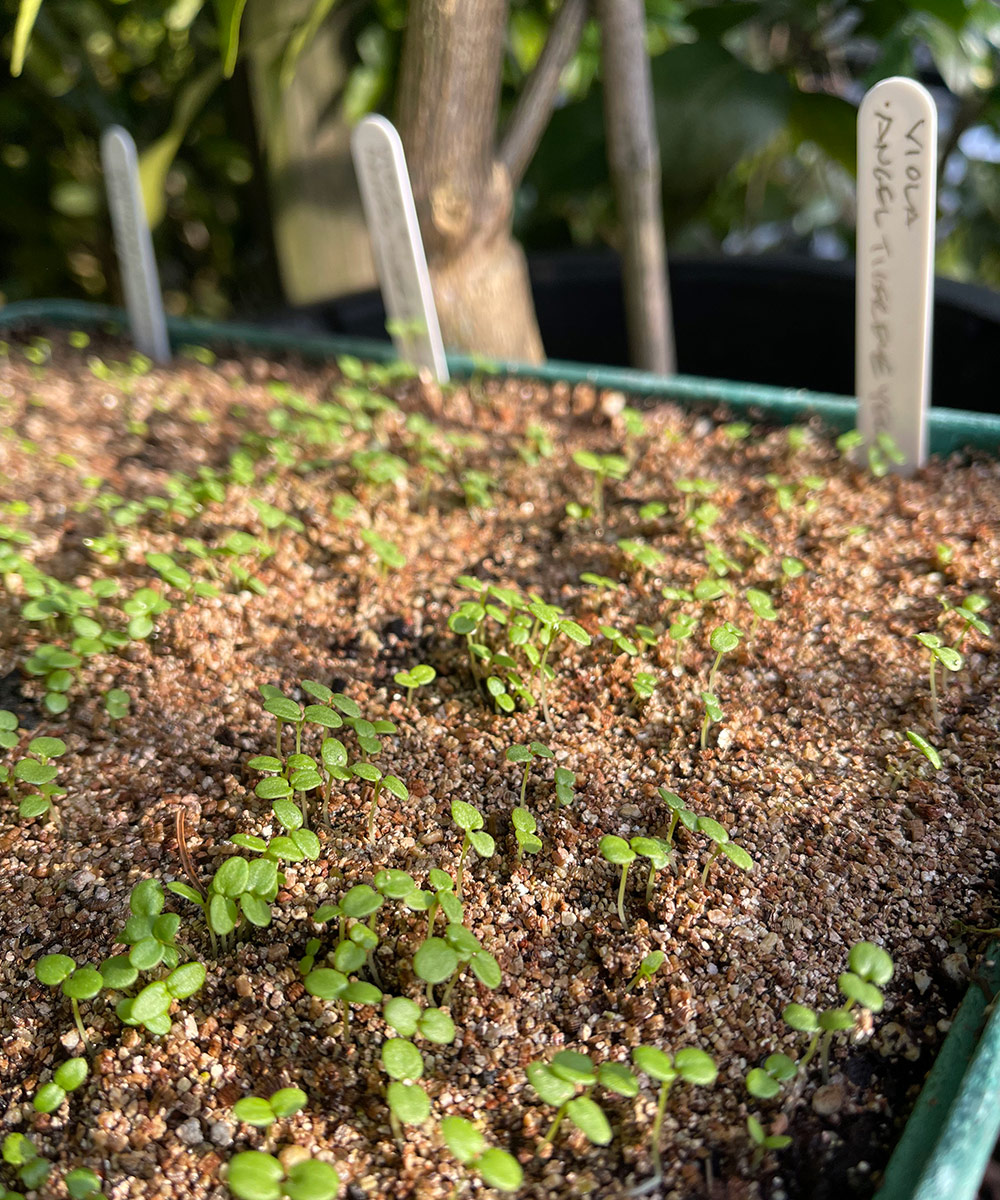
Pansies
Pansies (Viola x wittrockiana cvs., annual) require an early start too. Sow pansy seeds anytime from New Year’s Day until the end of January. Just cover the seeds lightly with 1/8 inch of soil and keep them moist, maybe with a sheet of plastic wrap. Violets (Viola spp. and cvs., Zones 3–9) should be treated in a similar manner when starting from seed.
The one caveat here is that, as previously said, sweet peas and pansies (and violets) all demand cooler growing conditions. Strive for air temperatures between 50° and 65°F, with a naturally slight drop in temperatures at night once the lights are out. This might be easy to achieve if you set your light up in a garage or a cool cellar. There are some benefits to living in the colder Northeast.
Lastly, don’t forget to order your seeds earlier than you usually do, try to add full-spectrum LED lights to your light unit or shop light set up, and most importantly, use a timer with your lighting unit. Set it to 15 to 16 hours of light, which will mimic those longer days of May.
For more on growing flowers from seed, check out:
- Growing Primroses from Seed in the Northeast
- Growing Annuals from Seed in the Northeast
- Demystifying Lupines in the Northeast
And for more Northeast regional reports, click here.
—Matt Mattus is the author of two books: Mastering the Art of Flower Gardening and Mastering the Art of Vegetable Gardening. He gardens in Worcester, Massachusetts.
Photos: Matt Mattus
Fine Gardening Recommended Products

Lee Valley Garden Knife
Fine Gardening receives a commission for items purchased through links on this site, including Amazon Associates and other affiliate advertising programs.

Gardena 3103 Combisystem 12-Inch To 20-Inch Adjustable Metal Fan Rake Head
Fine Gardening receives a commission for items purchased through links on this site, including Amazon Associates and other affiliate advertising programs.

DeWit Spork with Solid Socket
Fine Gardening receives a commission for items purchased through links on this site, including Amazon Associates and other affiliate advertising programs.


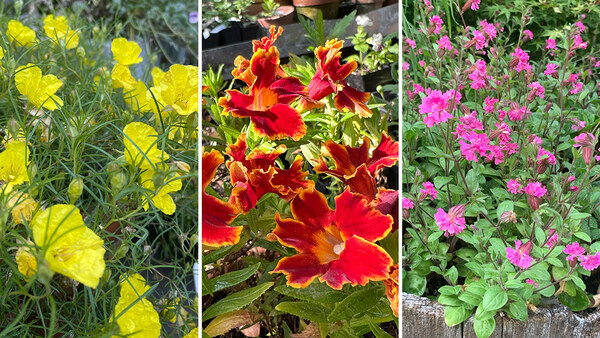


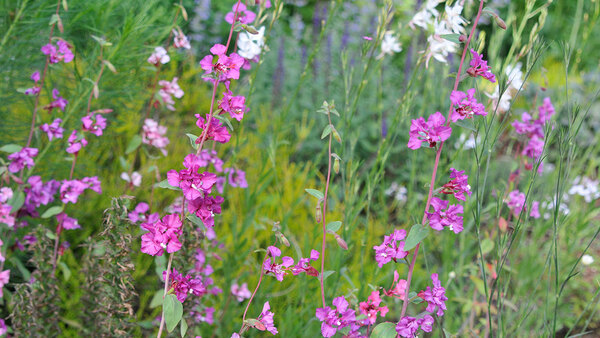













Comments
Log in or create an account to post a comment.
Sign up Log in